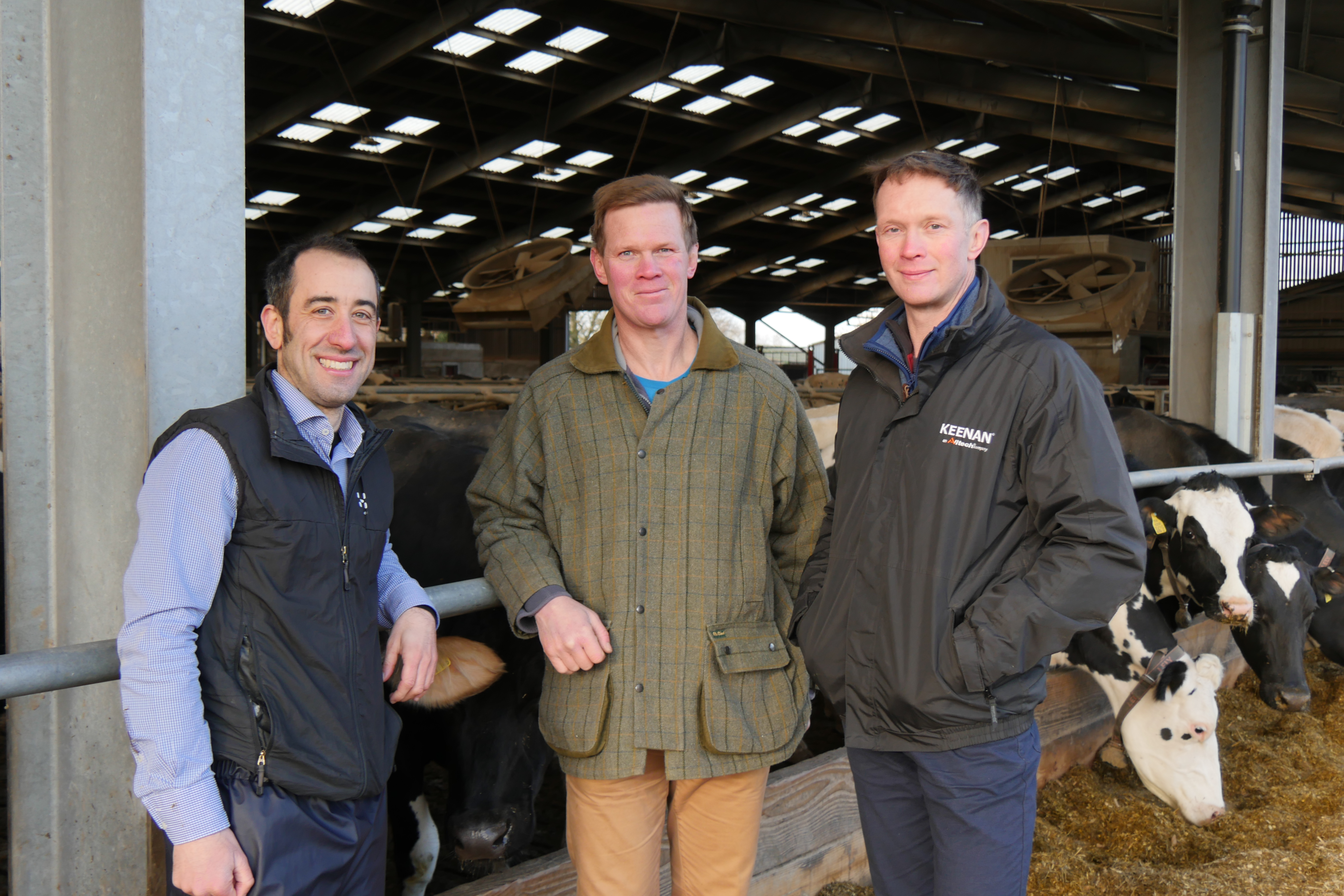- Home
- Optimising transition to maximise performance
Optimising transition to maximise performance
Michael and Tony Ball were joined by Dr Chris Hudson, of Nottingham University Farms, to examine the importance transition has in driving performance.
The meeting started with Michael providing a Coton Wood farm update. Michael explained his and Tony’s desire to drive long-term goals and impact in their decision making on farm.
They shared their high levels of animal welfare and a switch to a robotic system to increase from 8,500 to 10,000 litres per cow (9,500 litres achieved so far) were both part of this thinking. Both agreed they could drive performance more through closer management of transition and a closer examination of their KPI’s had outlined this as an area for improvement.
Dr Chris Hudson explained the wealth of knowledge the farm has available to base its improvements on, including data from the robot milking system, from the agri-software and milk recording statistics.
Closer analysis of fertility and transition at Coton Wood Farm established the following:
- Activity meters were useful to pick up bulling and had been expanded to be installed on heifers to help improve reporting
- Conception rates were a little up and down, dipping in the summer
- Age was flexible depending on the grass situation
- Over the last two winters, they had struggled with calf health and they were now weaning later (from 6–7 weeks to the current position of 8 weeks) that was stopping the drop in weight
- Data showed heifer fertility rate was good, but cow data included some culled cows and many more cows falling out of ideal time service and getting served later – which could be improved
- Their current cow litre performance was hitting 33 litres a day, but if they removed stale cows over 305 days who couldn’t get back in calf that this would increase by an additional 2 litres per cow
- Instances of clinical mastitis were okay on farm
- Cell counts were higher in places and the figures showed on average this affected yield by around 3 litres per cow per day for cows with a higher that 200 cell count – Tony and Michael recognised cell counts had not been a focus on farm
- Post-partum infections were low. First lactation heifer’s lactation curves were on track with other herds. However, mature cows were slower to get going their peak was lower. This was thought to explain the drop of up to 1,000 litres below target.
- Feed intake was established as the most likely reason cows with this and a target was set to get a kilogram or two more into these cows
After the brothers concluded with sharing their data, a farm tour was delivered where the group looked at stocking density in the transition sheds suggesting two sheds could operate by splitting the high performing and lower performing cows.
The concluded that despite taking a deep look into improving transitioning they had not made many of the suggested changes yet and were looking forward to driving improvement in this area after establishing some key areas to focus on.
Summary from Chris Hudson
- Look at what data you have that you can use to get a more detailed picture of areas that will make the biggest difference to production; these include milk recording statistics, agri-software information and, if robotic milking, the detailed reports available from these systems
- Often this is done by tracking issues before, during and after transition with different cows
- Improving transitions in all-year-round calving herds is greatly assisted by keeping records of illness and issues arising 30 days before and after transition and noting these on a chart
- The results of this chart can help you highlight trends of illness that generally highlight underlying issues
- An increased time in weaning had helped the Ball’s reduce weight loss in young calves over the winter
- Make sure your stocking rate is comfortable as this can affected performance
- For detailed guidance on improving transition you may want to look at our in-calf guide for AYR production systems or utilise some of the resources available on the Success in Transitions web pages




